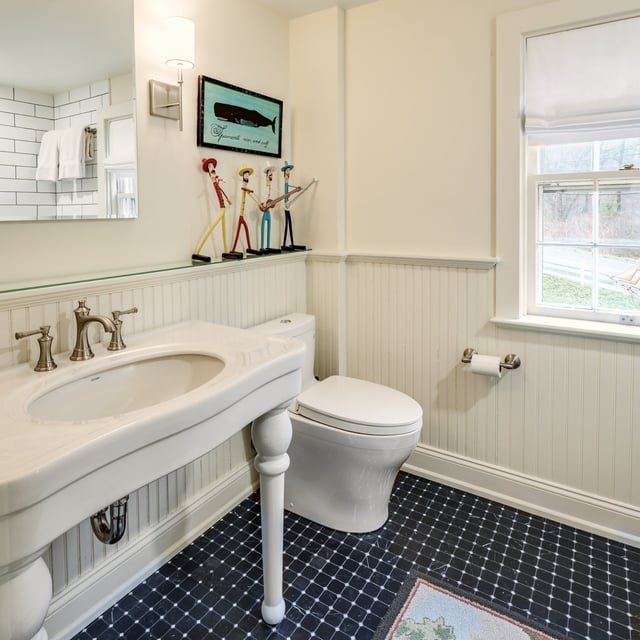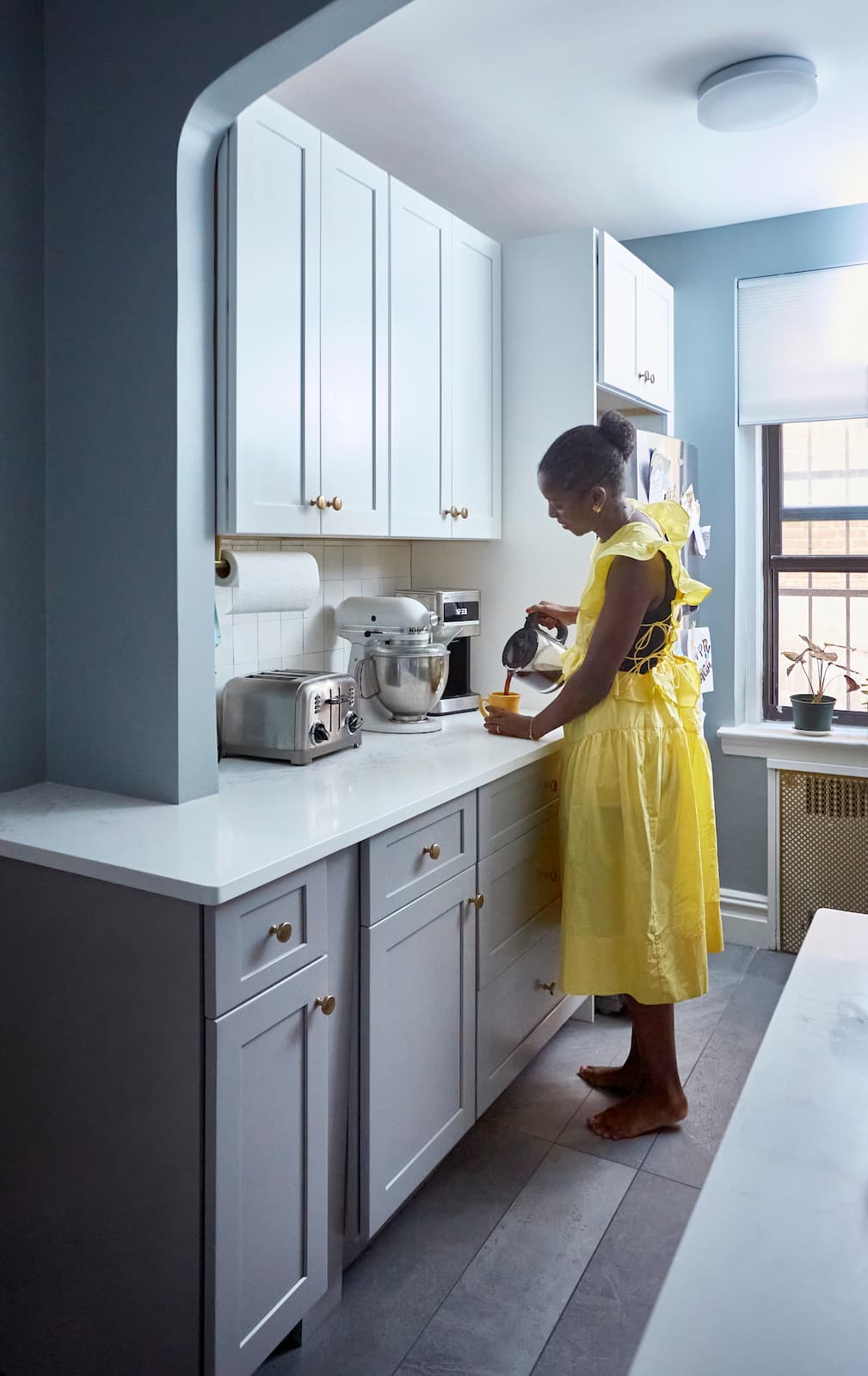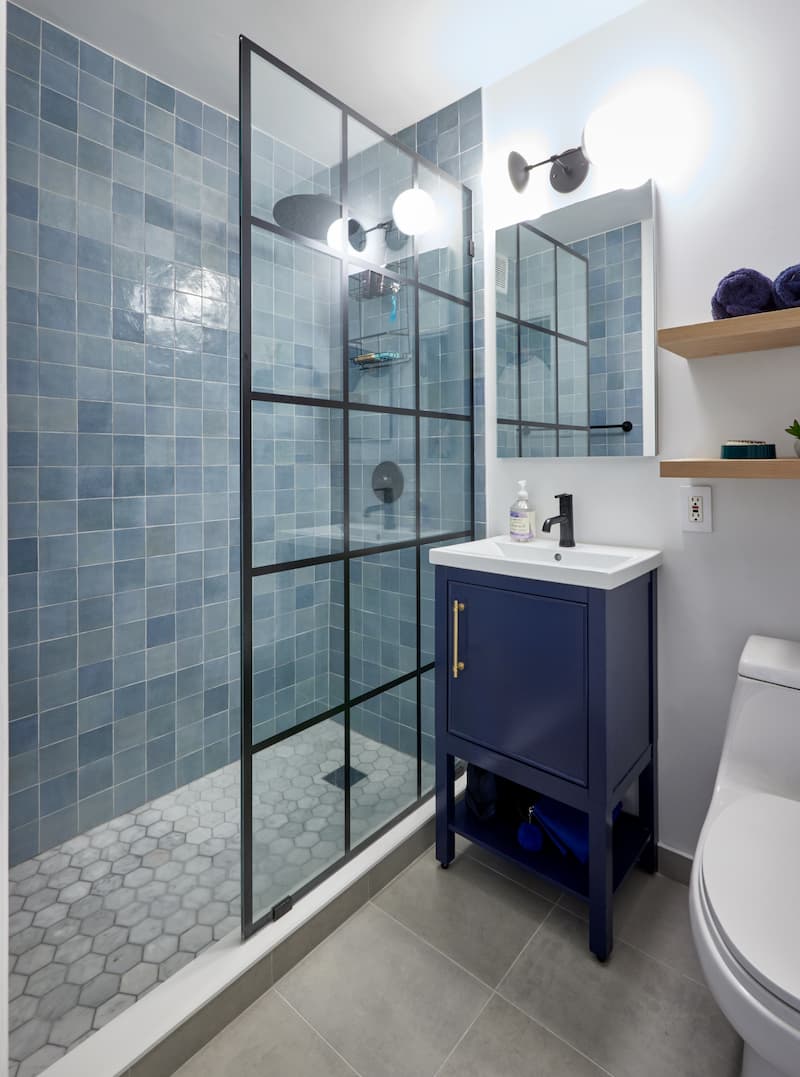Remodeling an Old Home on a Budget

In This Article
There’s a reason people fall in love with old homes. From original woodwork to soaring ceilings, these spaces tell a story. But when it’s time for an old home renovation, that history comes with complexity—especially if you’re trying to modernize on a budget.
The key is knowing what to preserve, what to upgrade, and how to stretch your resources without cutting corners. With the right plan and a bit of creativity, remodeling an old home can feel less like a compromise—and more like a chance to create something uniquely yours.
Here are smart, cost-conscious ideas for updating an older home, along with expert guidance to help you get started with clarity and confidence.
Important Notes About Renovating Old Homes
Your Older Home May Not Meet Today’s Standards or Zoning Rules
Many older homes were built long before current building codes and zoning regulations existed. For example, electrical wiring may lack proper grounding, or plumbing might use outdated materials like lead or galvanized steel. Staircases and railings may not meet today’s safety standards, and windows could be single-pane, making them less energy efficient. Even ceiling heights and room sizes might not align with modern requirements. Before starting your old house remodel, it’s important to have a professional assess which elements need to be updated to ensure your home is safe and up to code.
You May Require Special Permission
Renovating an older home often means navigating additional layers of approval, especially if your property is in a historic district or has landmark status. Local preservation boards may require you to submit plans and obtain permits before making changes to the exterior or certain interior features. Even seemingly minor updates, like replacing windows or doors, can require special permission to maintain the neighborhood’s character. These processes are designed to protect the architectural integrity of the area, but they can add time and complexity to your project. Working with a contractor experienced in old home renovation can help you navigate these requirements smoothly.
Older Home Renovations Should Not Be DIY
While DIY projects can be rewarding, remodeling an old home on a budget doesn’t mean cutting corners on safety or expertise. Older homes often contain materials that require special handling, such as lead paint or asbestos, which can be hazardous if disturbed. Electrical and plumbing systems may be outdated or non-compliant, posing risks if not upgraded correctly. Structural elements like beams and joists may have hidden damage that isn’t obvious to the untrained eye. Attempting to tackle these issues without professional help can lead to costly mistakes, safety hazards, or even legal trouble if work isn’t up to code. A licensed contractor will know how to identify and address these challenges, ensuring your renovation is both beautiful and safe. Ultimately, investing in expert guidance protects your home, your health, and your budget in the long run.
Turn your renovation vision into reality
Get matched with trusted contractors and start your renovation today!
Find a Contractor
All Materials and Building Elements Have a Shelf-Life
No matter how well-built your older home may be, every material—from roofing and siding to plumbing and wiring—has a lifespan. Over time, even the sturdiest elements will need repair or replacement due to wear, weather, or simple aging. For example, roofs typically last 20-30 years, while galvanized steel plumbing typically corrodes and needs replacement after 40–60 years.
A thorough inspection by a qualified home inspector can help you understand which parts of your home are still in good shape and which are nearing the end of their useful life. This knowledge allows you to prioritize updates and avoid unexpected surprises during your old house remodel. Planning ahead helps you make the most of your budget and ensures your home remains safe and comfortable for years to come.
Decide What Older Elements to Maintain vs. Modernize
One of the joys of remodeling an old home is blending the best of the past with the comforts of today. Before you start, take time to decide which original features you want to preserve and where modern updates will make the biggest impact. For example:
- Keep classic moldings, trim, or ceiling medallions, but pair them with modern paint colors.
- Refurbish vintage doors and hardware, adding new locks or handles for security and convenience.
- Maintain original fireplaces or built-ins, but update the surrounding area with contemporary tile or shelving.
- Upgrade lighting fixtures to energy-efficient options while choosing designs that complement your home’s era.
- Preserve stained glass or unique windows, but add storm windows or insulation for comfort and efficiency.
For more ideas, read our guides to renovating Victorian homes and Tudor homes.
Budget-Friendly Ideas for Renovating Older Homes
Invest in Energy-Efficient Updates
Improving your older home’s energy efficiency is one of the smartest ways to save money over time while making your space more comfortable. Such projects can include:
- Sealing gaps and cracks around windows and doors to prevent drafts and heat loss.
- Adding insulation to attics, basements, or crawl spaces to improve temperature control.
- Installing programmable thermostats to better manage heating and cooling costs.
- Replacing old light bulbs with LED alternatives for long-lasting, efficient lighting.
- Upgrading to low-flow faucets and showerheads to reduce water usage.
Open up the Floor Plan
Many older homes have smaller, separated rooms that can feel closed off by today’s standards. Knocking down non-load-bearing walls can create a more open, airy layout and improve natural light flow. One popular renovation idea for older homes is to knock down only part of a wall, making way for a breakfast bar or pass-through between the kitchen and dining area is a cost-effective way to modernize your space without a full remodel. Always consult a professional to ensure any structural changes are safe and permitted.
The Right Color Scheme Can Breathe New Life into an Old House
A fresh coat of paint is one of the most affordable ways to transform your home. Lighter colors can make small rooms feel larger and more inviting, while bold accent walls add personality and highlight architectural details. Consider using a palette that emphasizes your older home’s original features, such as trim or built-ins, to create a cohesive look. Don’t be afraid to experiment—paint is easy to change and can have a dramatic impact.
Refinish Old Floor Boards
Original hardwood floors are a prized feature in many older homes, and refinishing them can restore their beauty while preserving history. Sanding and resealing the boards removes years of wear and brings out the natural grain and warmth of the wood. This process is often more affordable than replacing flooring and can dramatically improve the look and feel of your space.
It’s important to note that uneven or damaged floorboards are common in older homes and may require professional leveling or repair before refinishing. Resurfacing may also be a more suitable solution if the condition is particularly worn.
Re-face Kitchen Cabinets
If your kitchen cabinets are structurally sound but look dated, refacing them is a budget-friendly alternative to a full replacement. This idea involves updating the cabinet doors, drawer fronts, and hardware while keeping the existing framework. You can choose modern finishes or colors that complement your kitchen’s style, instantly giving the space a fresh, updated look. Refacing is less disruptive and more affordable than a complete remodel, making it a smart choice for remodeling an old home on a budget.
Reglaze or Refinish Your Tub
Vintage tubs often have great bones but may show signs of wear, such as chips, stains, or dull finishes. Reglazing or refinishing your tub can restore its original shine and extend its lifespan without the cost of a full replacement. This process involves cleaning, repairing, and applying a durable new coating to the tub’s surface. To learn more about this process, specifically, check out Bath Reglazing or Replacing: Cost & Other Considerations.
Find the Right Lighting Fixtures
Lighting can make or break the atmosphere in an older home. Swapping out outdated fixtures for modern, energy-efficient options can instantly update your space and highlight your home’s best features. Look for fixtures that blend contemporary function with vintage-inspired design to maintain your home’s character. Layering different types of lighting—ambient, task, and accent—can also help create a warm, inviting environment.
Modernize Your Hardware and Appliances
Small details like cabinet knobs, drawer pulls, and faucets can have a big impact on the overall look of your kitchen and bathroom. Swapping out old hardware for sleek, modern options is a simple, budget-friendly way to redefine the look of your older home. When it comes to appliances, upgrading to energy-efficient models not only improves performance but also reduces utility costs. Choose finishes and styles that complement your home’s era for a cohesive, updated look that doesn’t sacrifice personality.
Partner With a Designer and Contractor Handpicked For Your Older Home
Renovating an older home is a journey—one that’s best taken with expert partners by your side. Block Renovation connects you with experienced designers and vetted contractors who understand the unique challenges and opportunities of old home renovation. From preserving historic details to navigating permits and building codes, our team provides personalized guidance every step of the way. With Block, you can feel confident that your old house remodel will honor your home’s history while making it truly your own.

Written by Block Renovation

Renovate confidently with Block
Easily compare quotes from top quality contractors, and get peace of mind with warranty & price protections.
Thousands of homeowners have renovated with Block

4.5 Stars (100+)

4.7 Stars (100+)

4.5 Stars (75+)
Renovate confidently
- Top quality contractors
- Warranty & price protections
- Expert resources

